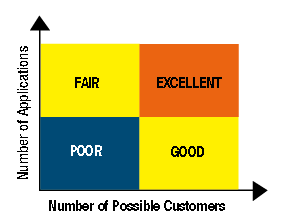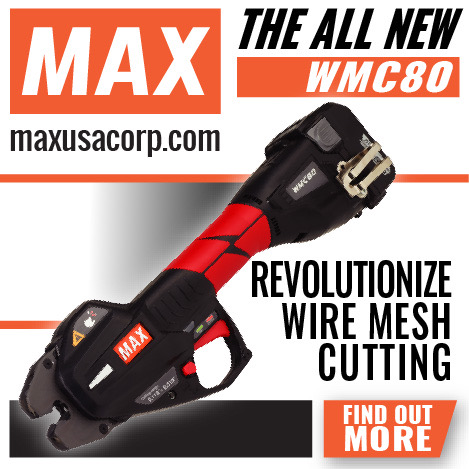STAFDA Inventory Consultant: Unwanted Inventory
 |
 |
How to dispose of it at the best possible price — or least expense
Remember, inventory you buy is a “sunk” cost. You’ve paid for it. No matter what it’s worth now, your money’s still gone. Compare it to shares of stock you may purchase in a company. The securities have “paper” value but no real monetary value until they are sold and turned back into cash.
Inventory slated for liquidation can be compared to shares of stock you own in a company headed for bankruptcy. When you first bought the stock, you thought it was a good investment. But market conditions, or other factors, changed the situation. The longer you hold onto the security the less it is worth. Selling the shares of stock for less money than you paid for them may be your best alternative. At least you’ll get some cash back from your investment.
While it does not produce the most desirable result,
liquidating dead inventory sure beats losing all of your money. Sure it’s painful. It hurts so much that some companies can’t bring themselves to do it. They are emotionally tied to their products. They may even believe in fairy tales, including the one about how, one day, some desperate customer will walk in and buy all of the dust-covered stuff in the warehouse. The occasional sale of a piece of dead inventory perpetuates many sales managers’ belief in this myth. But these infrequent sales cannot come close to economically justifying keeping all the products that should be removed.
In the movie Wall Street, Michael Douglas’ character, Gordon Gecko said, “Don’t get emotional about stock, it clouds your judgment.” He was referring to securities. The same advice applies to the material in your warehouse. Don’t get emotional about your inventory!
The goal of inventory liquidation is to dispose of unwanted inventory at the best possible price or least possible expense. Here are some ways to accomplish this task.
Transfer the excess stock to another company location where the inventory is needed. A product may be “dead” in one branch, but still active in another location. Why spend money to buy more of the product when you’ve already invested in inventory that is gathering dust at another branch? This option is particularly attractive if the cost of transporting the product between branches is a small fraction of the value of the item.
Many distributors have ongoing programs to move slow moving inventory to locations where it is in greater demand. This process is called inventory balancing. Lower ranked products in one branch are candidates to be transferred to other branches where they are “A” or “B” ranked items. Multi-branch distributors practicing successful inventory management balance inventory between warehouses at least four times a year.
Set up “drops” as separate inventory items. Often “drops” (remnants of whole pieces) are continually thrown in a scrap pile. Why not set up these left-over pieces as a separate inventory item and offer them to customers that don’t require a full piece?
Return Material to the Vendor. The actual desirability of this option varies with each vendor. Some vendors are very good about accepting returns. Others assess so many charges and conditions that returning material is not a feasible option. Remember that the best time to negotiate the terms for the return of material with a vendor is before you agree to take on a new product line or place a very large purchase order.
Reduce the price to “move” the excess inventory. Department stores do it, why can’t you? This works especially well when the customer has some choice of which of several items to purchase. For example, a customer might buy a discontinued power tool or other piece of equipment if the price is substantially lower than a similar item from normal stock.
Offer your salespeople a monetary incentive to sell the product. This works especially well when a customer can choose between several products that will meet his or her needs. Sometimes it is almost miraculous how fast inventory can move when salespeople are provided with the proper incentive.
Advertise the availability of this material to other suppliers. Some companies place ads in industry publications listing the products they are planning to liquidate.
There are also internet sites that maintain lists of available surplus stock. Search for sites that feature surplus material using the words “surplus,” “inventory,” and the name of one of your major products lines.
The internet provides four advantages over print ads in the sale of excess inventory:
1. Maintaining a Web site or utilizing a Web site that specializes in liquidating stock is often less expensive than taking out print advertising.
2. You usually have to submit the text for an ad several weeks before the magazine is distributed. After you have submitted the ad you might find other products you’d like to list, or you might sell some of the items that appear in the ad. You can update a Web site as often as you like.
3. With an ad you are betting a reader will need something you are advertising as she is reading the magazine. If she throws the issue out and then needs something in your ad three days later, you are both out of luck. With the internet, potential customers access your advertisement when they need something you have to offer.
4. With the internet, you are not restricted to the circulation of the magazine. You are advertising to a worldwide audience.
However, not all excess material can be sold over the internet. Look at the following graph that depicts a product’s internet sales potential:

Excellent – Generic products (or products whose quality is assumed by buyers) that have a large number of potential customers and a large number of possible
applications or uses.
Good - Generic products (or products whose quality is assumed by buyers) that have a large number of potential customers but a small number of possible
applications or uses.
Fair – Products with a large number of uses but a low number of potential customers. You often get better results if you directly approach these customers.
Poor – Products with a small number of uses and potential customers.
Keep in mind that generic products and items that are assumed to be of acceptable quality sell well over the internet. Those products that a customer must “touch and feel” before buying generally don’t sell well in an e-commerce environment unless the customer is very familiar and comfortable with the supplier.
One distributor lost a customer contract to supply a certain custom-made product. When the contract was canceled, there was a four-month supply of the item on the distributor’s shelf. And worse, the vendor wouldn’t accept a return of the material. The stock of this item could be accurately termed “future dead inventory.” Instead of taking the typical non-action of ignoring the situation, one salesman took assertive action. He called his competitor who won the contract and sold his entire inventory of the product at 80 percent of cost. As there was no other use for the material, this was truly “found” money!
Substitute the product for a less expensive item. Suppose you sell water heaters. Your manufacturer replaced his model A345 with the model A365 that offers easier access to the heating element. You have three pieces of this discontinued 40-gallon heater in stock. Naturally, contractors ordering a 40-gallon heater want the new model. But, when a customer orders a 20-gallon heater, why not offer him one of the discontinued 40-gallon heaters at the price of a 20-gallon unit? Remember, inventory isn’t worth what you paid for it. It is worth what someone is willing to pay you for it.
Donate the material to a non-profit organization. Can a school, church or charity use some of your dead or slow moving inventory? This alternative is especially attractive for sub-chapter “C” corporations in the United States.
Presently, these companies can take a deduction of up to twice the cost of the inventory. Talk to your accountant or tax advisor for details and restrictions concerning material donations.
A good source for finding organizations that can use what you have to offer is the National Association for the Exchange of Industrial Resources, Galesburg, IL. (Call 800-562-0955 or visit www.naeir.org).
Throw it away. This is obviously the least agreeable alternative. But, at least you are freeing up some shelf space in your warehouse, getting rid of an eyesore, and getting some benefit by being able to write off the cost of the material.
A 12-Month Job
Most firms worry about liquidating dead stock once a year. That is, after they complete their physical inventory. The owner looks at the Inventory Valuation Report. He clutches his chest as he views the list of ugly inventory items (i.e. stuff that’s in your warehouse that you wish wasn’t there). He makes one of several pronouncements:
“We have too much stuff in our warehouse. Stop buying inventory.” Great! Most of what is in your warehouse may be dead or slow moving. The boss’s new policy prevents you from replenishing the inventory of the products that do sell on a regular basis. The result is all too common: You have a warehouse full of material, but you don’t have the products necessary to meet your customers’ current needs.
“We’re going to get rid of this stuff by next year.” In many companies, this pronouncement is as predictable as the ball dropping on New Year’s Eve in Times Square.Unfortunately, it is forgotten five days after the end of the fiscal year. And 12 months later, the warehouse is bulging with even more inventory.
“We need a new computer system (or new people) to straighten out this inventory mess.” Without implementing the business policies necessary for effective inventory management, no person or computer system can bring a muddled inventory under control.
Inventory liquidation must be an on-going process that must be coordinated by a specific individual in your organization. We call this person “The Liquidator.” (You have visions of Clint Eastwood, right?) After receiving the list of discontinued products and items with excess inventory, this person must determine the best method of liquidation for each item with surplus stock. That is, the method that returns the most value to the company. They must go through the list, trying each method of liquidation in order of desirability, until they dispose of the material.
But remember, excess inventory disposal isn’t a one-person job. Every department must participate in the effort under the liquidator’s direction. He or she organizes everyone’s activities and makes sure that the effort to reduce dead stock and excess inventory continues throughout the year.
Remember that the goal of effective inventory management is to meet or exceed customers’ expectations of product availability with the amount of each item that will maximize your net profits. If your customers don’t expect something to be available for immediate delivery, why would you have it gathering dust in your warehouse? CS
Jon Schreibfeder is president of Effective Inventory Management, Inc. He has authored numerous articles and several books on inventory management best practices and is the designated inventory management consultant for STAFDA. Jon can be reached at 972-304-3325 or by e-mail at info@effectiveinventory.com
















